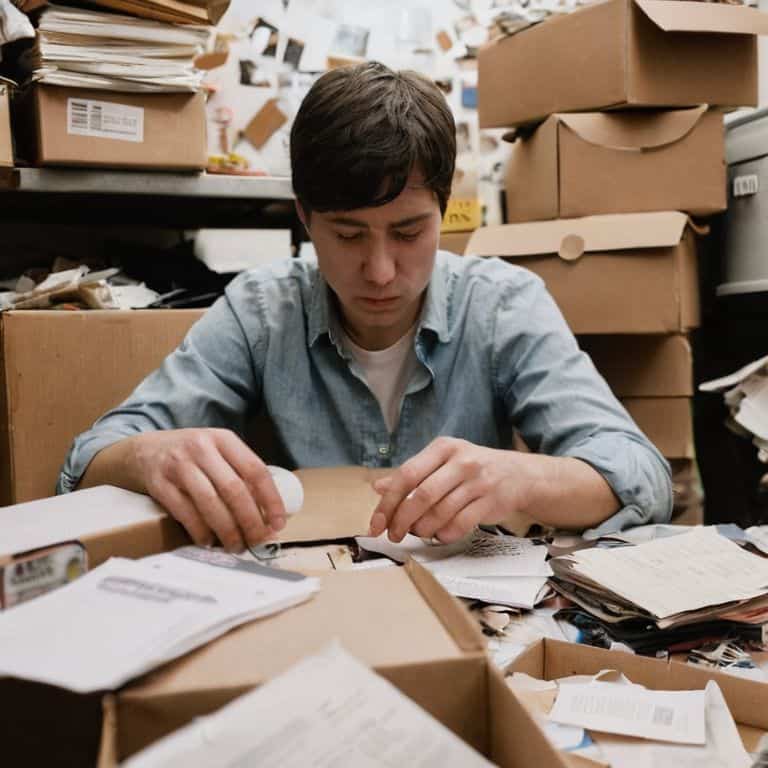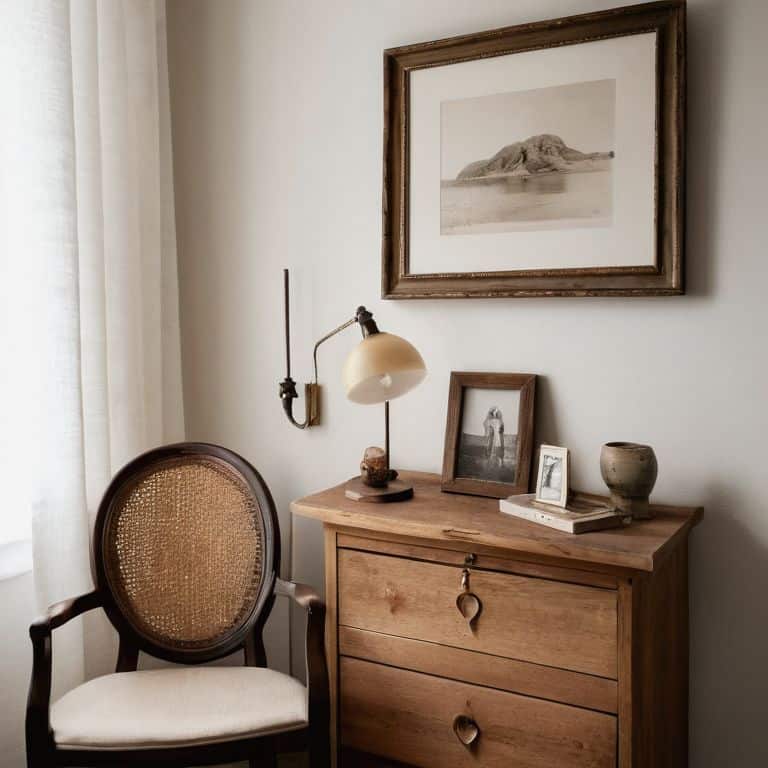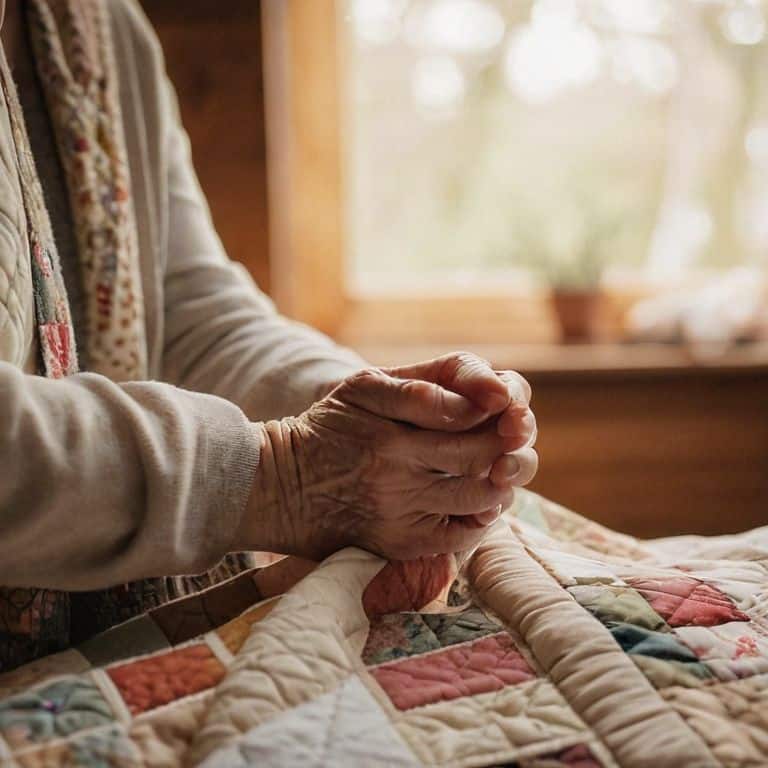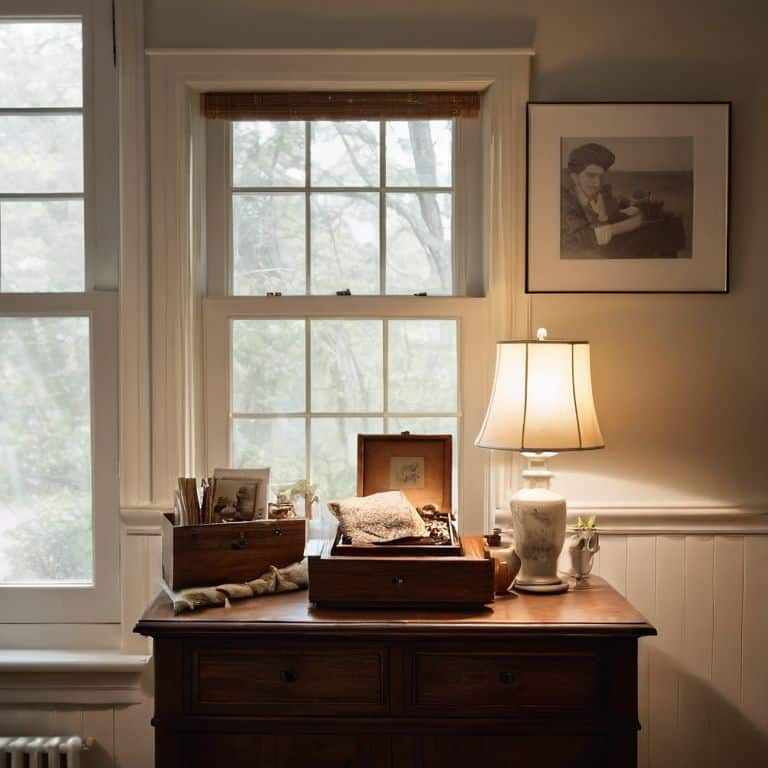As I sat amidst the chaos of my grandmother’s attic, surrounded by dusty trinkets and faded photographs, I realized that overcoming sentimental clutter isn’t just about getting rid of stuff – it’s about confronting the stories and memories that make us who we are. We’ve all been told that a clutter-free life is a key to happiness, but what about the emotional weight of letting go of items that hold sentimental value? I’ve found that it’s in these messy, imperfect moments that we discover the true meaning of our possessions and the memories they hold.
In this article, I’ll share my personal journey of embracing the beauty of imperfection and provide you with practical advice on how to tackle sentimental clutter without losing the essence of what makes you, you. I’ll guide you through the process of redefining what’s truly important and offer tips on how to create a space that reflects your values and story. By the end of this journey, you’ll have the tools to transform your relationship with your belongings and uncover the stories that make life worth living.
Table of Contents
- Guide Overview: What You'll Need
- Step-by-Step Instructions
- Overcoming Sentimental Clutter
- Unpacking the Art of Letting Go: 5 Tips to Help You Overcome Sentimental Clutter
- Embracing the Beautiful Mess: 3 Key Takeaways
- Embracing the Freedom
- Embracing the Freedom of Letting Go
- Frequently Asked Questions
Guide Overview: What You'll Need

Total Time: several days to several weeks
Estimated Cost: $0 – $100
Difficulty Level: Intermediate / Hard
Tools Required
- Box cutter (with extra blades)
- Label maker (optional)
- Storage bins (various sizes)
Supplies & Materials
- Cardboard boxes (sturdy, for donations or storage)
- Markers (for labeling boxes)
- Shredder (for sensitive documents)
- Folder or file organizer (for important documents)
- Trash bags (for items to be discarded)
Step-by-Step Instructions
- 1. First, let’s start by embracing the chaos and acknowledging that sentimental clutter is a natural part of our lives. It’s the accumulation of memories, emotions, and stories that we’ve attached to various objects over time. To begin, take a deep breath, and gently start to sift through the clutter, allowing yourself to revisit the memories and emotions associated with each item. As you do this, remember that it’s okay to feel a little nostalgic and sentimental.
- 2. Next, create a safe space for your sentimental items, where you can store them without feeling overwhelmed or guilty. This could be a beautiful, wooden trunk, a vintage suitcase, or even a designated shelf in your home. The key is to create a sacred space that honors the memories and emotions attached to these items, while also keeping them organized and out of the way.
- 3. Now, let’s talk about the art of letting go. This is often the most challenging part of overcoming sentimental clutter, as it requires us to confront our emotions and attachments. Start by asking yourself tough questions, like: “Does this item still bring me joy or serve a purpose?” or “Can I preserve the memory or story associated with this item in a different way?” Be honest with yourself, and remember that it’s okay to let go of items that no longer resonate with you.
- 4. As you continue to sort through your sentimental clutter, consider preserving the stories behind each item. You could write down the memories and emotions associated with each object, take photos, or even create a digital archive. This way, you can still cherish the memories and stories without having to physically keep every single item. Remember, it’s the story that matters, not the object itself.
- 5. Another approach to overcoming sentimental clutter is to create a ritual around letting go. This could be as simple as lighting a candle, playing soothing music, or taking a few moments to reflect on the memories and emotions associated with each item. By creating a ritual, you can transform the process of letting go into a meaningful and intentional act, rather than a chore or a source of stress.
- 6. It’s also important to set boundaries with yourself and others when it comes to sentimental clutter. This might mean limiting the amount of sentimental items you keep, setting a “one in, one out” rule, or establishing a regular “clutter review” process. By setting boundaries, you can maintain a sense of control and balance in your life, while still honoring your sentimental items.
- 7. Finally, remember that overcoming sentimental clutter is a journey, not a destination. It’s a process that requires patience, self-compassion, and gentleness. Don’t be too hard on yourself if you struggle to let go of certain items or if you find the process emotional. Instead, focus on progress, not perfection, and celebrate your small victories along the way.
Overcoming Sentimental Clutter

As I delve into the world of sentimental clutter, I’ve come to realize that embracing the emotional weight of these items is crucial. It’s not just about getting rid of stuff, but about preserving memories in a way that doesn’t overwhelm our living spaces. I’ve found that creating a memory box for keepsakes can be a beautiful way to honor the past while keeping the present tidy.
Understanding emotional attachment to possessions is also key. Why do we hold onto certain items? Is it because of the person who gave it to us, or the memory it represents? By acknowledging the stories behind these objects, we can begin to let go of guilt associated with decluttering. It’s okay to release items that no longer serve us, as long as we’re preserving the essence of the memory.
In my own journey, I’ve learned to appreciate the value of organizing family heirlooms in a way that respects their history. This might mean displaying a few cherished items proudly, while storing others in a safe and accessible place. By doing so, we can preserve memories without clutter, and create a sense of harmony in our homes that allows us to breathe, reflect, and truly live.
Preserving Memories Without Guilt
As I sit amidst my own treasured possessions, I realize that preserving memories doesn’t have to mean holding onto every tangible item. I’ve learned to take photos of sentimental objects before letting them go, creating a digital archive of memories that feels both freeing and nostalgic. This way, I can still cherish the story behind each item without the weight of physical clutter. It’s a delicate balance between honoring the past and embracing the present.
By preserving memories in a more intentional way, I’ve found that the guilt associated with letting go of sentimental clutter begins to fade. The memories and stories remain, even if the physical objects do not. This mindset shift has allowed me to approach my belongings with a sense of curiosity and wonder, rather than obligation and duty.
Taming Emotional Attachments
As I sit amidst the treasures of my own life, I’m reminded that emotional attachments are the threads that weave our memories into being. A faded photograph, a childhood blanket, or a vinyl record – each one a tangible connection to a moment, a person, or a feeling. To tame these attachments, I’ve learned to acknowledge the stories they hold, rather than the physical space they occupy. By recognizing the emotional weight of an object, I can begin to release my grip, ever so gently, and find ways to preserve the memory without being held captive by the physical item.
In this process, I’ve discovered the beauty of digitization and thoughtful curation. Scanning old photos, recording stories behind cherished objects, and creating playlists from beloved vinyls have allowed me to honor the past while embracing the present. It’s a delicate dance between holding on and letting go, one that requires patience, self-compassion, and a willingness to redefine what it means to treasure something.
Unpacking the Art of Letting Go: 5 Tips to Help You Overcome Sentimental Clutter
- Start by acknowledging the stories behind your belongings, and then gently challenge the notion that keeping everything is the only way to preserve those memories
- Create a ‘maybe’ box for items that are difficult to decide on, and set a deadline to revisit each item – if you haven’t thought about it by then, it’s likely safe to let it go
- Practice the art of ‘curated keeping’, where you choose to keep only a select few items that truly spark joy or serve a purpose, and let go of the rest
- Transform sentimental items into new, meaningful objects – like turning old t-shirts into a quilt, or framing a piece of artwork created by a loved one
- Establish a ‘one in, one out’ policy to maintain a sense of balance and prevent clutter from building up again, and remember that it’s okay to let go of something that no longer serves you, even if it holds sentimental value
Embracing the Beautiful Mess: 3 Key Takeaways
By acknowledging the emotional weight of sentimental clutter, we can begin to unravel the complex stories and memories attached to everyday objects, and find ways to preserve them without feeling overwhelmed
Preserving memories without guilt means being intentional about what we keep, and finding creative ways to repurpose or display items that hold sentimental value, rather than letting them collect dust in storage
Ultimately, overcoming sentimental clutter is not about erasing the past, but about curating a present that honors our memories and experiences, while also making space for new stories and connections to unfold
Embracing the Freedom
As we learn to let go of sentimental clutter, we’re not losing pieces of ourselves, but rather, we’re uncovering the stories that truly make us who we are – imperfect, authentic, and free to write the next chapter of our lives.
Maya Sterling
Embracing the Freedom of Letting Go

As I reflect on our journey of overcoming sentimental clutter, I’m reminded that it’s not just about parting with possessions, but about reclaiming our stories. We’ve explored the importance of taming emotional attachments, preserving memories without guilt, and embracing the beauty of imperfection. By acknowledging the emotional weight of our belongings and learning to let go, we can begin to see our lives as a vibrant tapestry of experiences, rather than a collection of dusty relics. It’s a process that requires patience, empathy, and a willingness to confront our own vulnerabilities.
As we close this chapter on overcoming sentimental clutter, I want to leave you with a final thought: the art of living is not about accumulating possessions, but about cultivating presence. By embracing the freedom of letting go, we can uncover the beauty in the everyday and find meaning in the most mundane moments. So, let’s raise a cup to the messy, imperfect, and utterly beautiful journey of life – may we always find joy in the unexpected, and may our lives be a reflection of our truest, most authentic selves.
Frequently Asked Questions
How do I decide what sentimental items to keep and what to let go of without feeling guilty?
For me, it’s about asking: does this item still spark joy or tell a story that’s meaningful to me? If it’s just taking up space, I let it go, knowing the memory stays with me. I also take photos of items before releasing them, so I can still cherish the memory without the physical clutter.
Can I still honor the memories attached to sentimental clutter if I digitize them, such as scanning old photos or recording stories behind heirlooms?
I adore this question. Digitizing sentimental clutter can be a beautiful way to preserve memories without the physical weight. Scanning old photos or recording stories behind heirlooms allows you to honor the past while freeing up space in the present. It’s a thoughtful way to curate your memories, making them accessible and shareable, while also letting go of the guilt that often comes with letting go of physical objects.
What role can creative repurposing or upcycling of sentimental items play in overcoming clutter while preserving their emotional significance?
For me, creative repurposing is a beautiful way to breathe new life into sentimental items, rather than letting them collect dust. Upcycling a vintage scarf into a reusable bag or transforming old photos into a handmade collage can be a powerful way to preserve memories while letting go of clutter, allowing the emotional significance to evolve into something fresh and meaningful.
